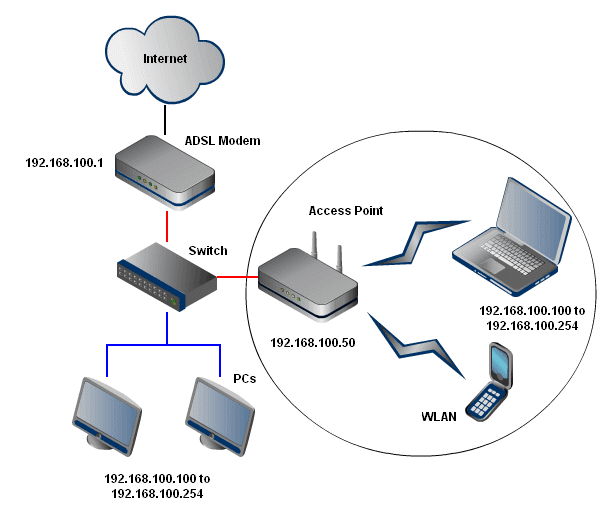Computer As Wifi Access Point
Posted : adminOn 5/25/2018

Last week we showed you, this week we’re looking at how you can use use an existing hardwire network to easily and quickly extend your wireless network using simple access points. After we published our guide, we received a variety of reader questions regarding other tips and tricks one could use to extend a wireless network. Bill wrote in with the following question which echoes quite a few similar emails: I read and followed your guide last Tuesday.
Everything worked as promised, but I’ve noticed the secondary router seems a little flaky. Is there a more bare-bones way to go about this technique than setting up the Tomato routers via WDS as you have us do in the tutorial? My house is wired with Ethernet but, alas, very few of my devices actually use hard wire anymore. What can I do? All my routers are running current releases of TomatoUSB.
If Bill didn’t have the existing LAN in place, we’d have to tell him to try a different firmware (like DD-WRT) that allows for true Wi-Fi repeating. Since he has an existing hardwired Ethernet LAN, however, he’s in luck. In a situation with no Ethernet network, you have to rely completely on wireless technology to link the access points together (as we did when we used WDS to link the two Tomato routers together last week). When you have a hardwired network, however, things get radically easier as you can use the Ethernet as a backbone for the network and convert the secondary routers to simple access points that require little effort to configure and deploy.
How to turn your Windows 10 PC into a wireless hotspot Windows 10 includes a feature called 'Hosted Network' that allows you to turn your computer into a. Ray Charles Volcanic Action Of My Soul Rar. Dolphins Software Volts Enterprise on this page.
What specifically do you gain by using this technique over the previous technique? In our prior tutorial we showed you how to make a mesh of Wi-Fi routers. While that’s a great solution if you don’t have any hard wire to connect them, it does have its short comings as it requires a lot of configuration and a Wi-Fi mesh protocol that can introduce latency and reduced bandwidth. The technique we’re about to outline simply adds Wi-Fi access points to any open Ethernet connection on your hard-wired LAN—no fancy configuration or Wi-Fi Voodoo required.
What You’ll Need For this tutorial you need the following things: • One primary router • One or more secondary routers • One physical port on the primary router and one direct Ethernet cable link for each secondary router That’s all you need! You don’t even, technically, need any fancy after market firmware like Tomato or DD-WRT. That merits repeating. Although we’re going to be using Tomato-powered routers, you can use just about any stock Wi-Fi router around without flashing the firmware.
Unlike other Wi-Fi tutorials we’ve shared that involve deep mucking around in the guts of a customized router, this tutorial simply requires that you are able to change the basic Wi-Fi access point settings on your secondary routers. Getting Started: Resetting The Secondary Router For the purposes of clarity, we’re going to refer to the primary router as the “Primary Router” and the secondary router as the “Secondary Router”. Simple, yes, but it ensures we’re all on the same page and not applying the settings to the wrong device. Again, although we’re using TomatoUSB these instructions can be applied to nearly every router on the market.